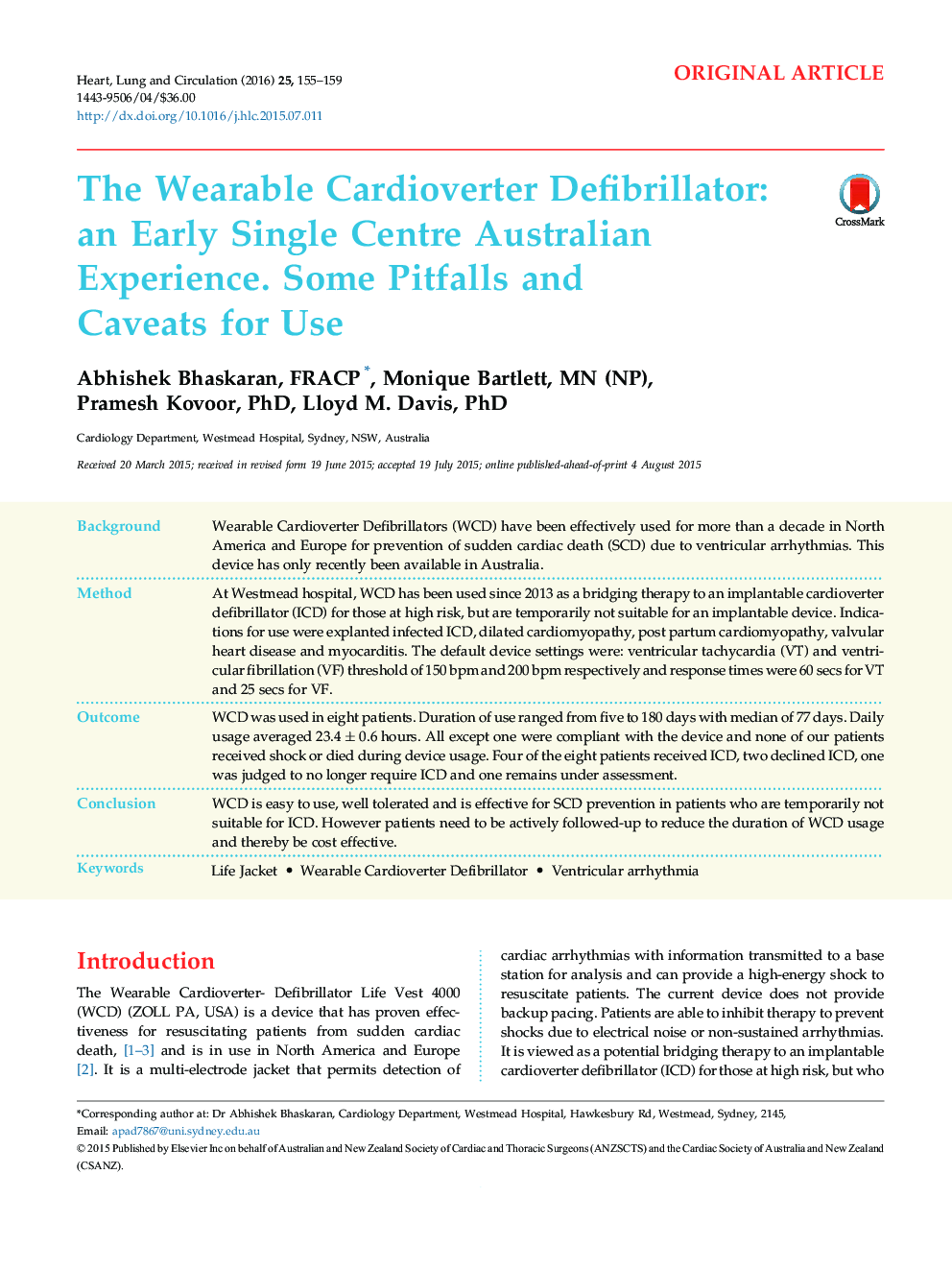| Article ID | Journal | Published Year | Pages | File Type |
|---|---|---|---|---|
| 2916884 | Heart, Lung and Circulation | 2016 | 5 Pages |
BackgroundWearable Cardioverter Defibrillators (WCD) have been effectively used for more than a decade in North America and Europe for prevention of sudden cardiac death (SCD) due to ventricular arrhythmias. This device has only recently been available in Australia.MethodAt Westmead hospital, WCD has been used since 2013 as a bridging therapy to an implantable cardioverter defibrillator (ICD) for those at high risk, but are temporarily not suitable for an implantable device. Indications for use were explanted infected ICD, dilated cardiomyopathy, post partum cardiomyopathy, valvular heart disease and myocarditis. The default device settings were: ventricular tachycardia (VT) and ventricular fibrillation (VF) threshold of 150 bpm and 200 bpm respectively and response times were 60 secs for VT and 25 secs for VF.OutcomeWCD was used in eight patients. Duration of use ranged from five to 180 days with median of 77 days. Daily usage averaged 23.4 ± 0.6 hours. All except one were compliant with the device and none of our patients received shock or died during device usage. Four of the eight patients received ICD, two declined ICD, one was judged to no longer require ICD and one remains under assessment.ConclusionWCD is easy to use, well tolerated and is effective for SCD prevention in patients who are temporarily not suitable for ICD. However patients need to be actively followed-up to reduce the duration of WCD usage and thereby be cost effective.
